The Red and the Black

There is no better exercise for the mind than strategic and tactical games. And there is a whole array of them to choose from. The royal game of chess, well-known and played in our country since time immemorial, along with its more modest cousin – checkers, were recently joined by the increasingly popular ‘Go’, and with it, by ‘Tantrix’, ‘Set’, ‘Hive’, ‘Storycubes’, ‘Dixit’ and many other board and card games, stimulating memory, logical thinking, imagination, associations and other skills needed by a thinking creature.
One of them is ‘Bohnanza’, a card game loved by children as much as by adults, which can by played by up to 7 people at a time. The players ‘grow’ different species of beans, such as Blue Bean (‘Kowboj’ in Polish), Black Eyed Bean (‘Bokser’), Stink Bean ("Grubas"), Soy Bean (‘Hipis’), and more, on separate plots.


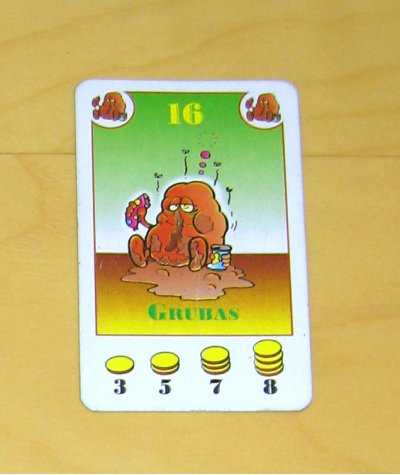
Grown beans can be cashed based on the pricing given at the bottom of each card. Coins that the players receive from sales of beans, can be found on the back of the cards. According to the price list, for three Stink Beans…
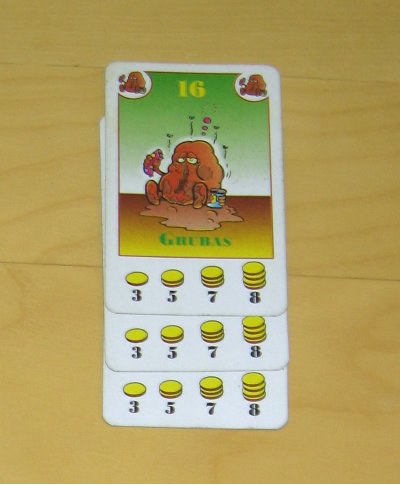
… you can get one gold coin:

… and for five of them…
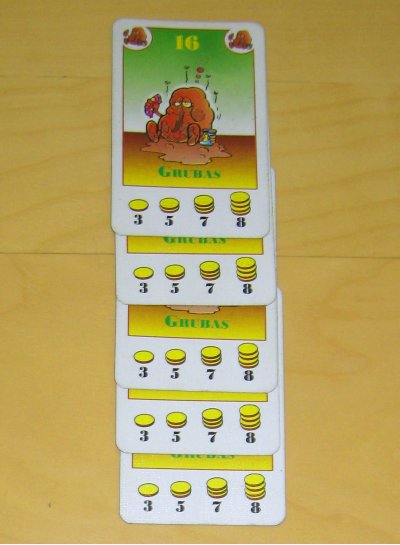
… two coins:
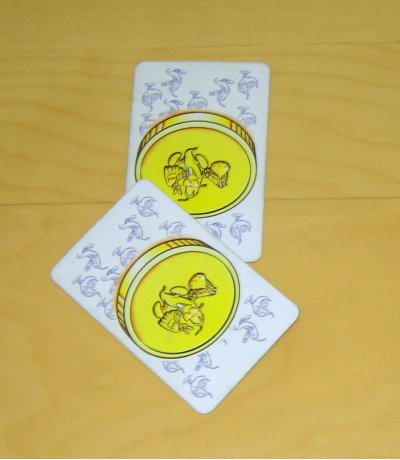
The rarest and, at the same time, the most valuable species is the Garden Bean:

For each planted Bean of that type a player receives one gold coin…
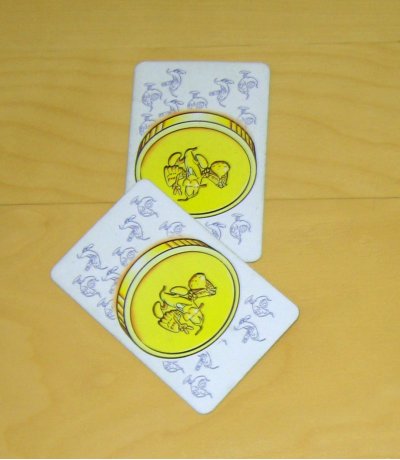
… but there are only six such cards in the deck.
Another form of trade a player can use is barter. If, for example, one player grows Blue Beans and another one grows Stink Beans on their plots…

… they can, at a defined point of the game, swap cards freshly drawn from the deck or the ones they still have in hand.
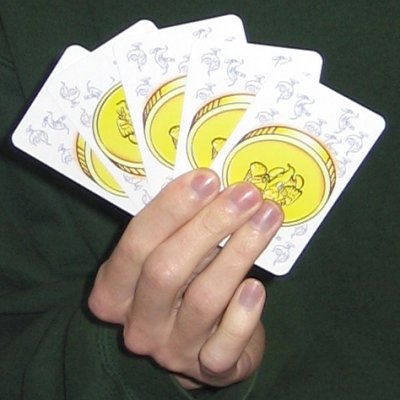
A special type of bean, used in one of the expansions, is Spider Bean, which comes in two colors: red and black.
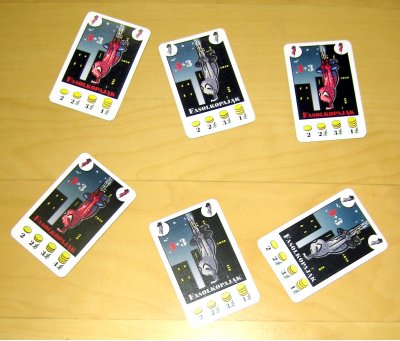
While planting Spiderbeans it pays to diversify. The more groups of red or black "spiders" a farmer has on his plot, the more he will earn on the sale of beans. For the harvest from the plot of black Spider Beans …
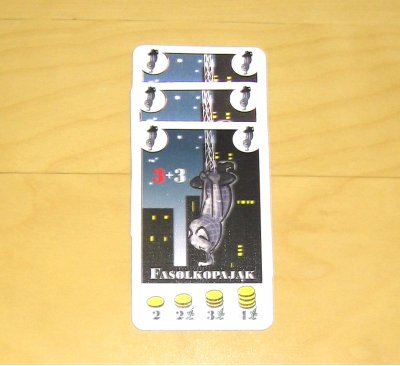
… he will get only one coin, whatever the number of the Beans:
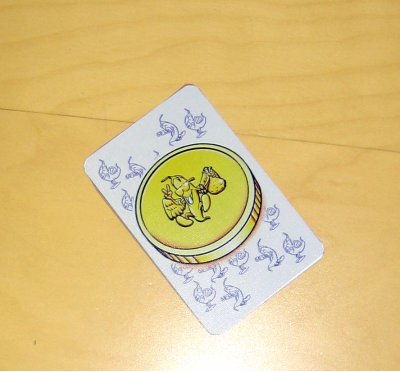
... while cashing the Spider Beans which grew in three groups (black-red-black):

… he will receive three coins…
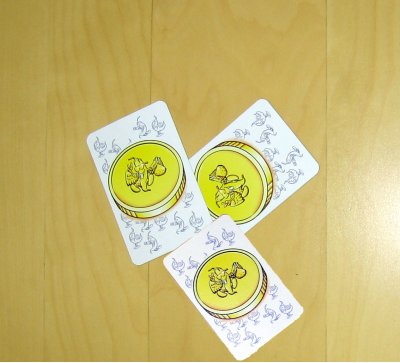
… and for the following sequence: (black-red-black-red)…
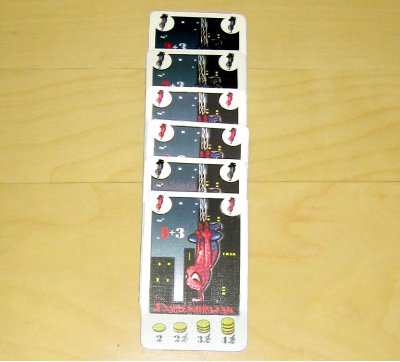
… he will scoop as many as four coins…

… although the number of cards is the same as before. It is the number of groups that counts, not the number of cards in a group.
Needless to say that Spider Beans are very popular items to swap. An additional attraction is the possibility of cheating about the color of a Spider Bean you want to swap for another card. But you can only do it if you want to trade a black ‘spider’. If it is a red one, you must reveal its true color.
One Saturday evening an exciting game of Bohnanza was coming to an end. The players were just about to harvest their crops and count the cash they had earned. The two of them were negotiating one of the last exchanges in this game.
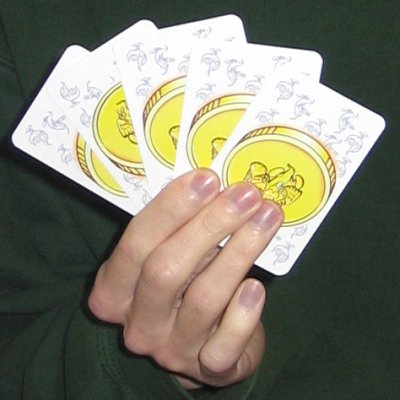
‘I can give you a black ‘spider’ for a ‘black-eyed’, said Martha to Matthew. ‘Hmmm…’ the man was thinking aloud… ‘Theoretically, you could be lying, but I don’t really believe you would do such a thing.’
‘She can’t be lying’ interjected Michael (15).
‘She can, it is allowed when you have black’ the other players hasted to explain. But Michael insisted in his own mind.
‘If you can cheat only when you have black then Matthew can be sure that Martha’s ‘spider’ is really black’ he went on to explain.
And what do you think? Was he right or wrong?






